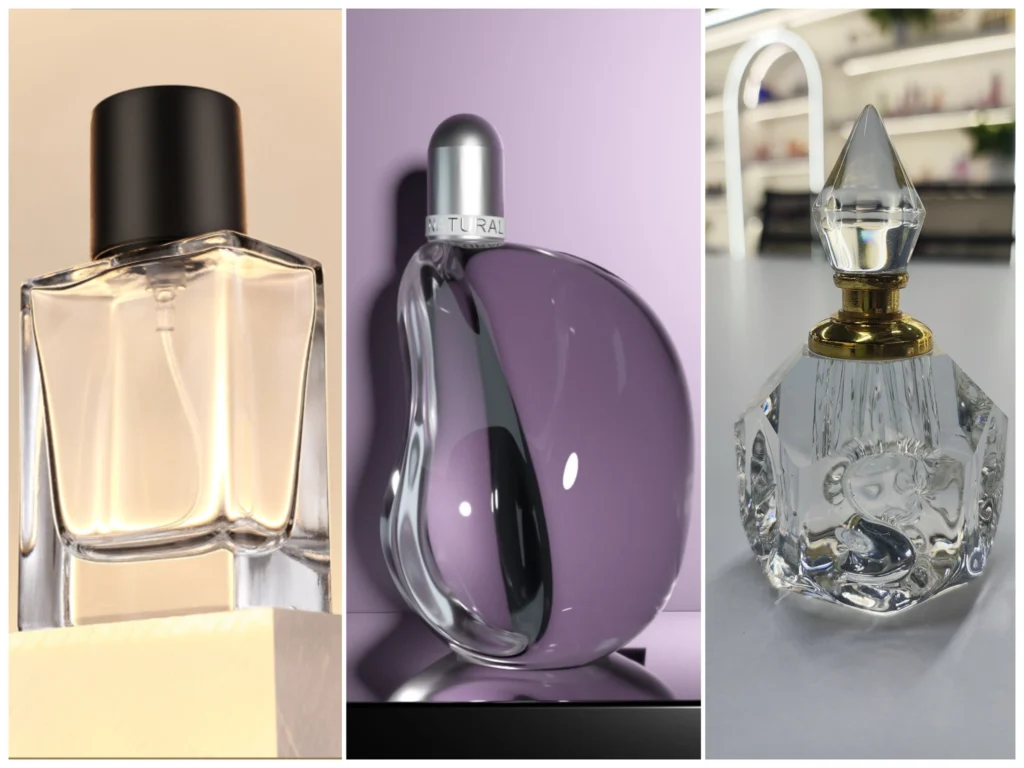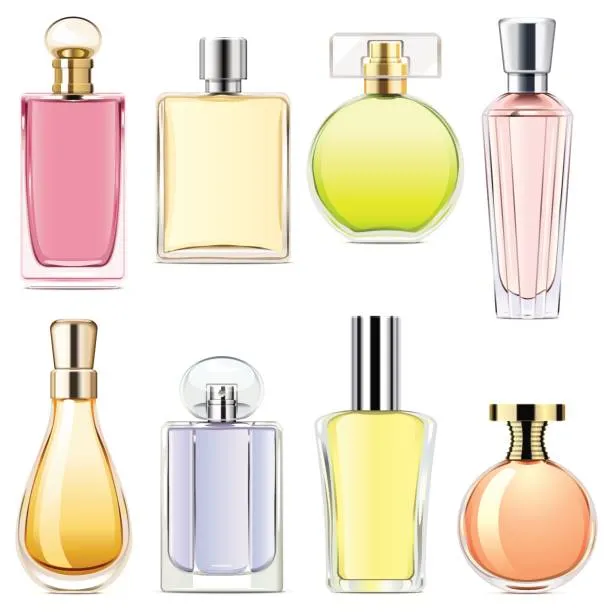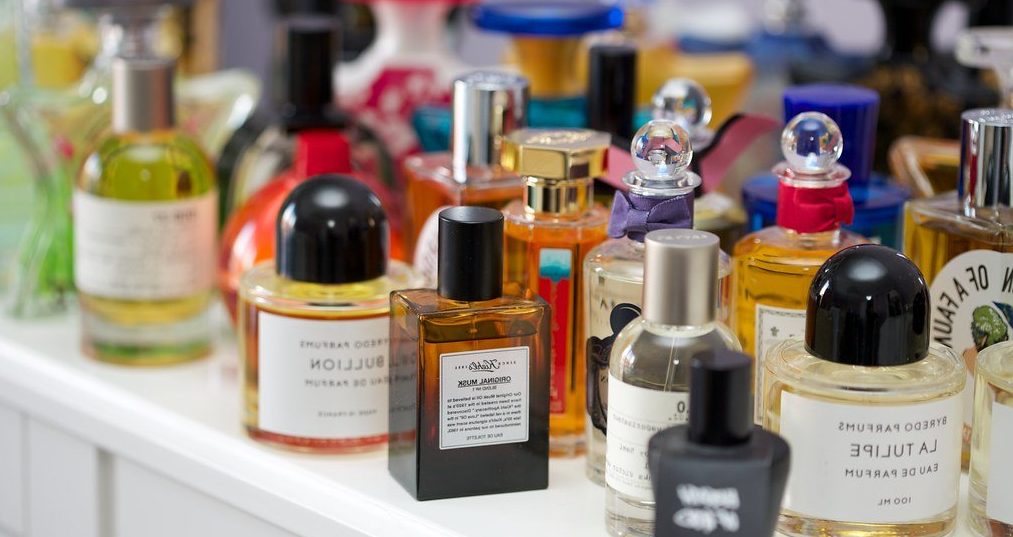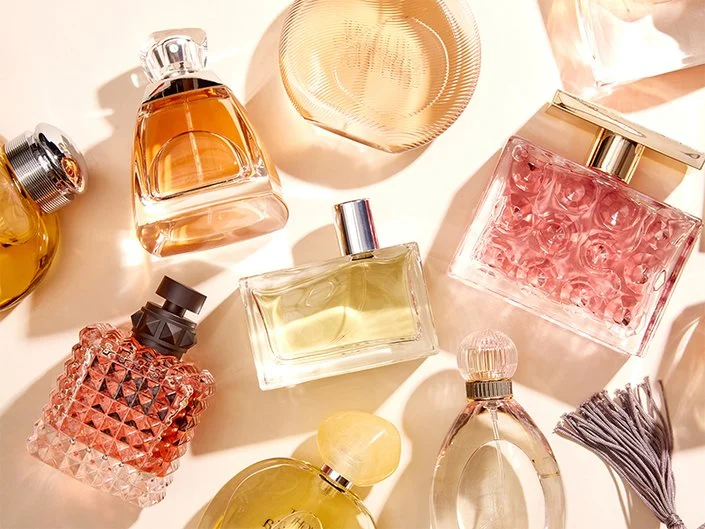When choosing a perfume, we often focus on the scent itself and the bottle’s appearance. However, the material the bottle is made from plays a crucial, often overlooked role in preserving the fragrance. Glass remains the preferred choice for high-quality perfumes because it’s inert and non-porous, preventing interaction with the scent’s delicate chemical composition. Plastic bottles, while practical and lightweight, can sometimes allow oxygen to seep in over time or even absorb fragrance molecules, potentially altering the perfume’s character.
How Light Can Ruin Your Perfume
Sunlight is arguably perfume’s biggest enemy. Ultraviolet (UV) rays don’t just brighten your day – they actively damage fragrance. These rays break down the delicate aromatic oils inside the bottle, causing the scent to fade, change, or lose its unique character.
How UV Rays Impact Perfume
UV light triggers chemical reactions within perfume ingredients. This weakens the scent’s strength and alters its profile. Unfortunately, this damage is often permanent. Just three to six months of light exposure can irreversibly change your fragrance. High-end perfumes with natural ingredients are particularly vulnerable, as sunlight rapidly degrades these precious oils.
The Problem with Clear glass bottles
Clear glass bottles offer almost no defense against light damage. A common example: one perfume lover noticed her Prada fragrance losing its top notes after just two weeks on a shelf – not even in direct sunlight. This shows how even ambient light can compromise quality over time.
Where Not to Store Perfume
Windowsills are the worst storage spots, but sunlit bathrooms and open shelves aren’t much better. Any place with regular light exposure accelerates fragrance deterioration. Your perfume will fade significantly faster in these locations.
Choosing Protective Packaging
Dark-colored bottles, ceramics, or UV-coated glass provide the best protection. These materials block damaging rays and help preserve the scent’s integrity. When selecting a new fragrance, consider the bottle’s protective qualities alongside its design.
Best Practices for Storage
Always store perfume in cool, dark places. A closed cabinet, wardrobe, or even the original box works perfectly. Keep caps tightly sealed, and maintain a consistent, cool temperature. These simple habits dramatically extend your fragrance’s lifespan.
Light exposure remains a serious threat to perfume longevity. Without proper storage, even the most beautiful scent might deteriorate within months.
How Bottle Materials React with Perfume
The choice of perfume bottle material isn’t just about looks – it actively protects or jeopardizes the fragrance inside. Certain materials can chemically interact with the perfume, altering its scent or even creating unpleasant odors over time.
Why Glass Reigns Supreme
Glass remains the gold standard for perfume storage, favored by chemists and luxury brands alike. Its non-reactive nature preserves scent integrity for years without alteration. Iconic fragrances like CHANEL No. 5, Guerlain Shalimar, and Jo Malone all rely on glass vessels for good reason: studies show glass maintains over 95% of a fragrance’s quality for 12-24 months. For long-term preservation, glass outperforms other options.
Crystal and Ceramic Alternatives
High-quality crystal offers similar protection to glass with enhanced elegance. Its stability prevents unwanted chemical reactions while showcasing the perfume beautifully. Ceramic bottles also provide excellent protection through their non-porous, sealed construction. While long-term performance data is limited, many artisanal brands choose ceramics for both their protective qualities and distinctive aesthetic appeal.
The Plastic Problem
Most plastic bottles pose significant risks to fragrance longevity. Inexpensive materials like PET or acrylic can leach chemicals into the perfume, especially when combined with alcohol or delicate natural ingredients. This interaction frequently alters scent profiles, changes color, and degrades complex notes. Industry findings reveal 20-40% of perfumes in low-grade plastic bottles develop noticeable scent changes within 6-12 months – particularly problematic for fragrances containing delicate floral, citrus, or aldehyde compositions.
Sensitive Ingredients at Risk
Certain perfume components react strongly with incompatible materials. Aldehydes (found in vanilla or cinnamon accords) can oxidize when contacting metals, creating sour off-notes. Esters may break down through hydrolysis when exposed to certain plastics or uncoated metals. These reactions explain why high-aldehyde perfumes often show accelerated deterioration in unsuitable containers.
Material Comparison Breakdown
Glass and crystal demonstrate near-zero reactivity, making them ideal for preserving scent purity. Ceramics show minimal interaction while offering artistic possibilities. Plastic presents consistent risks of chemical migration and scent alteration, with changes often noticeable within a year for sensitive fragrances. Metal closures (if uncoated) can accelerate oxidation in aldehyde-rich perfumes.
Perfume chemists and luxury brands consistently recommend non-reactive glass for premium fragrances. While plastics serve as practical containers for quickly-consumed products, they remain a compromise for scent preservation.
Glass Bottles (Clear vs. Dark): How They Affect Your Perfume
The type of glass bottle your perfume lives in significantly impacts its lifespan. While glass remains the top choice for preserving fragrance integrity, the color of that glass – clear or dark – plays a crucial protective role.
Clear Glass Perfume Bottles: Vulnerable to Light Damage
Sunlight and UV rays penetrate clear glass effortlessly, breaking down delicate scent molecules. This degradation hits hardest in perfumes rich with natural ingredients. Lab tests confirm the risk: a clear-glass fragrance left in light can lose 20-30% of its scent strength within six months. Many popular brands still choose clear glass to showcase their perfume’s beautiful color, often advising owners to store bottles in darkness. For collectors of complex, high-end fragrances, clear bottles may accelerate scent fading despite their aesthetic appeal.
Dark and Colored Glass Bottles: Superior UV Protection
Dark glass bottles (amber, cobalt blue, or opaque colors) provide essential UV defense. Research shows perfumes in amber glass retain over 95% of their original scent after a year, compared to just 75% in clear glass. Luxury brands leverage this science for their most precious creations – houses like Jo Malone, CHANEL, and Guerlain consistently use dark glass for natural-ingredient-rich or premium fragrances. The choice goes beyond aesthetics; it’s a calculated preservation strategy.
Why Glass Reigns Supreme (Regardless of Color)
Glass outperforms other materials because it’s inert – it won’t chemically react with perfume or introduce contaminants. Both clear and dark glass create an effective barrier against air exposure, preventing scent degradation through oxidation. Crucially, the bottle’s seal matters as much as its material: a loose cap allows air infiltration that can diminish top notes by 40% annually.
Best Storage Practices for Glass Bottles
Clear glass perfumes demand extra care – store them in cool, dark spaces like cabinets or their original boxes. While dark glass offers better light resistance, it still needs protection from heat and humidity. Regardless of bottle color, always secure caps tightly to minimize air exposure.
Crystal Perfume Bottles: Scent, Style, and Value
Crystal perfume bottles stand apart as exceptional vessels for fragrance. Beyond their breathtaking beauty, they excel at preserving scents, offer lasting durability, and carry significant collector appeal – making them a premium choice over standard glass or plastic.
Superior Scent Preservation
Crystal’s non-porous structure creates an impermeable barrier that prevents chemical reactions with perfume ingredients. This inert quality preserves the fragrance’s true character far better than reactive materials like plastic or metal. The dense material also minimizes evaporation of delicate scent molecules, crucial for maintaining a perfume’s original composition. Many crystal bottles feature UV-resistant coatings or tinted designs that block light damage. For optimal preservation, storing these bottles in cool, dark environments adds extra protection for fragile accords.
The Luxury Factor
In the fragrance world, crystal bottles symbolize uncompromising luxury. Heritage houses like Baccarat, Lalique, and Swarovski reserve crystal for limited editions and collectible releases, with some designs produced in batches of just a few hundred. This exclusivity drives significant market value – vintage or rare pieces often command thousands at auction. The material’s inherent density makes these bottles 20%–50% heavier than standard glass, enhancing both durability and that satisfying premium feel in hand. Collectors treasure them as functional art, appreciating intricate craftsmanship and the prestige of owning a master artisan’s work.
Essential Care Practices
Maintaining crystal bottles requires gentle handling. Clean surfaces with a soft lint-free cloth, avoiding chemical cleaners that could etch the crystal. Store bottles in stable, cool, dark environments to protect both fragrance and vessel integrity. Unlike porous materials, crystal doesn’t retain odors, allowing properly cleaned bottles to be safely reused for different scents – a practical bonus for fragrance enthusiasts.
Ceramic Perfume Bottles: Light Protection, Tradition, and Scent Preservation
Ceramic perfume bottles offer exceptional protection for fragrances, standing apart from glass alternatives. Their solid, opaque construction creates an impenetrable barrier against light while remaining chemically inert. This dual defense shields delicate scents from UV damage and prevents unwanted reactions, preserving the perfume’s true character for years.
Why Ceramic Excels as Perfume Packaging
Ceramic’s light-blocking properties are unmatched – its opaque body eliminates all UV and visible light penetration, preventing scent degradation. Chemically, it remains stable and non-reactive, unlike metals or plastics that can alter fragrance composition. The material’s density also provides thermal insulation, buffering perfumes against temperature fluctuations that accelerate spoilage. These qualities make ceramic a guardian of scent integrity.
Practical Considerations
While ceramic outperforms glass in light blocking and chemical stability, its weight and opacity present trade-offs. These bottles resist temperature shifts beautifully and offer eco-friendly credentials through sustainable materials, making them popular with niche perfumers. However, their non-transparent nature prevents checking fragrance levels visually, and they’re more prone to chipping if dropped compared to glass.
Composition and Sustainability
Most ceramic perfume bottles use high-fired clay (porcelain or stoneware) sealed with food-grade glaze. This creates an impermeable, scent-safe environment. The material’s natural origins and lower environmental impact increasingly attract modern brands seeking sustainable luxury – turning each bottle into both preservation tool and eco-statement.
Ceramic bottles represent the marriage of artisanal heritage and functional excellence. They deliver superior light protection and thermal stability while honoring perfumery’s artistic traditions, though they require careful handling. For those valuing both preservation and craftsmanship, ceramic remains a timeless choice.
Plastic Perfume Bottles: Scent Degradation & Chemical Risks
Plastic perfume bottles offer undeniable convenience – lightweight, shatterproof, and budget-friendly. But these practical advantages come with significant trade-offs for fragrance quality, making them a risky choice for preserving precious scents.
The Hidden Costs of Plastic
Chemical interactions pose the biggest threat. Over time, certain plastics can leach compounds into perfume, especially when exposed to high alcohol content. This contamination alters the fragrance’s character, often creating off-notes or a synthetic smell. Oxygen permeability is another issue: plastic allows more air seepage than glass, accelerating oxidation that breaks down scent molecules and weakens the perfume. Light and heat compound these problems – most plastics provide poor UV protection, and temperature fluctuations can warp containers, compromising seals and inviting more air damage. Beyond chemistry, plastic’s tactile feel often undermines luxury perceptions, making premium fragrances seem less special.
Where Plastic Fits in the Industry
Plastic’s practicality secures its niche in travel sprays, sample vials, and functional components like spray nozzles. Its lightweight durability makes it ideal for these applications. However, this convenience carries environmental consequences – single-use plastic samples generate massive beauty industry waste. While luxury brands avoid plastic for full-size bottles (opting for glass vessels with only ancillary plastic parts), the material remains common for disposable formats.
Evidence of Compromised Quality
Lab tests confirm that heat and alcohol exacerbate plastic’s chemical migration into fragrances. Many users report noticeable scent changes in plastic-stored perfumes – top notes fading faster or strange odors developing within months. Industry experience shows perfumes in low-quality plastics degrade particularly quickly, with sensitive citrus or floral accords most vulnerable.
The Verdict
Plastic bottles introduce multiple risks: chemical contamination, accelerated oxidation, and inadequate light protection. While useful for short-term applications like samples or travel sprays, they’re ill-suited for preserving fine fragrances long-term. For cherished scents, glass or ceramic remains the recommended choice to maintain integrity and enjoyment.
Best Practices for Perfume Preservation
Preserving a perfume’s true character requires careful storage and handling – factors as crucial as the bottle material itself. These science-backed methods help fragrances maintain their integrity over time.
The Critical Role of Seals
Airtight seals are the first defense against scent degradation. Always secure caps or atomizers completely after use. Proper sealing maintains air content below 5% inside the bottle, while poor seals allow over 20% air infiltration – accelerating fragrance breakdown. Minimizing bottle openings also matters significantly. Each open-close cycle introduces approximately 10 cm² of new air contact, promoting evaporation and scent fading.
Optimal Bottle Materials
Dark glass bottles (amber or cobalt blue) offer superior protection. Their light-blocking properties and non-reactive nature safeguard complex fragrances for years. Plastic bottles should generally be avoided for long-term storage, as they may leach chemicals and permit oxygen transfer. For travel needs, specialized aluminum atomizers designed for perfumes outperform plastic alternatives. Filling them completely minimizes trapped air.
Ideal Storage Conditions
Cool, dark environments are essential. Store perfumes away from heat sources like radiators and avoid humid spaces like bathrooms. Temperatures below 25°C (77°F) prevent molecular breakdown. Complete darkness is equally vital – even artificial light damages scent compounds. Keep bottles in drawers, cabinets, or original boxes regardless of container opacity.
Special Considerations for Oils & Travel
Perfume oils benefit from reducer caps or roll-ons that limit air exposure during application. When decanting for travel, choose glass or fragrance-safe aluminum containers over plastic. Fill vessels completely to reduce air space, store upright during transit, and seal in pressure-resistant bags during flights to prevent leaks.
Advanced Collector Strategy
Serious enthusiasts often maintain dual collections: a “working” bottle for regular use and a sealed “archive” bottle stored in optimal conditions. This archival approach minimizes air contact and temperature fluctuations, preserving the fragrance’s original profile for years.
Following these guidelines preserves both the sensory experience and monetary value of fragrances – whether it’s your everyday signature scent or a treasured collector’s item.
Conclusion: The Material Matters
Ultimately, perfume bottle materials aren’t just containers – they’re guardians of your fragrance’s soul. From glass’s inert protection and dark glass’s UV defense to ceramic’s light-blocking strength and crystal’s luxury integrity, every material impacts scent longevity. Plastic’s permeability and chemical risks remind us that true preservation requires science-backed choices. For creators who value fragrance integrity, TP Glass Bottle Manufacturer crafts precision-engineered vessels where form meets function. Our pharmaceutical-grade dark glass bottles, customizable UV coatings, and hermetic seals ensure your signature scents remain uncompromised from first spritz to final drop. Because when exceptional fragrances deserve exceptional protection, the bottle is never just packaging – it’s preservation perfected.





